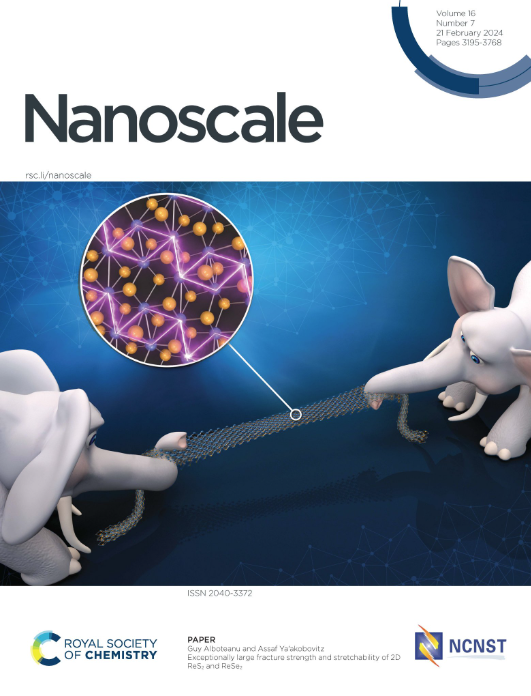Advancements in DNA-PAINT: applications and challenges in biological imaging and nanoscale metrology
IF 5.8
3区 材料科学
Q1 CHEMISTRY, MULTIDISCIPLINARY
引用次数: 0
Abstract
Super-Resolution Microscopy (SRM) has revolutionized bioimaging by breaking the diffraction limit of light, enabling visualization of structures at the nanometer scale. DNA-PAINT (Point Accumulation for Imaging in Nanoscale Topography) is a versatile SRM technique that leverages the programmability of DNA hybridization to achieve high-resolution and multiplexed imaging of molecular targets. This review examines recent advancements in DNA-PAINT, including improvements in imaging resolution, acquisition speed, and imager design, which have enhanced its applications in biological imaging and nanoscale metrology. DNA-PAINT’s unique capacities in programming specific interactions have made it indispensable in a range of biological and non-biological settings, from cellular visualization of structure and function to molecular data storage. Here, we highlight recent advancements in DNA-PAINT and its main practical challenges, focusing on how persistent optimization drives innovation. Addressing these challenges continues to drive its expanding role in biological imaging and broader applications across interdisciplinary fields. This review also highlights the interdependence of DNA-PAINT and other techniques that are fundamental to broadening the impact of SRM and shaping the future of biological and biomedical imaging.DNA-PAINT的进展:在生物成像和纳米尺度计量中的应用和挑战
超分辨率显微镜(SRM)通过打破光的衍射极限,实现纳米尺度结构的可视化,彻底改变了生物成像。DNA- paint是一种多功能的SRM技术,利用DNA杂交的可编程性来实现分子目标的高分辨率和多路成像。本文综述了DNA-PAINT的最新进展,包括成像分辨率、采集速度和成像仪设计方面的改进,这些改进增强了DNA-PAINT在生物成像和纳米尺度计量中的应用。DNA-PAINT在编程特定相互作用方面的独特能力使其在一系列生物和非生物环境中不可或缺,从细胞结构和功能的可视化到分子数据存储。在这里,我们重点介绍了DNA-PAINT的最新进展及其主要的实践挑战,重点介绍了持续优化如何推动创新。解决这些挑战将继续推动其在生物成像和跨跨学科领域的更广泛应用中的作用。这篇综述还强调了DNA-PAINT和其他技术的相互依赖性,这些技术对扩大SRM的影响和塑造生物和生物医学成像的未来至关重要。
本文章由计算机程序翻译,如有差异,请以英文原文为准。
求助全文
约1分钟内获得全文
求助全文
来源期刊

Nanoscale
CHEMISTRY, MULTIDISCIPLINARY-NANOSCIENCE & NANOTECHNOLOGY
CiteScore
12.10
自引率
3.00%
发文量
1628
审稿时长
1.6 months
期刊介绍:
Nanoscale is a high-impact international journal, publishing high-quality research across nanoscience and nanotechnology. Nanoscale publishes a full mix of research articles on experimental and theoretical work, including reviews, communications, and full papers.Highly interdisciplinary, this journal appeals to scientists, researchers and professionals interested in nanoscience and nanotechnology, quantum materials and quantum technology, including the areas of physics, chemistry, biology, medicine, materials, energy/environment, information technology, detection science, healthcare and drug discovery, and electronics.
 求助内容:
求助内容: 应助结果提醒方式:
应助结果提醒方式:


